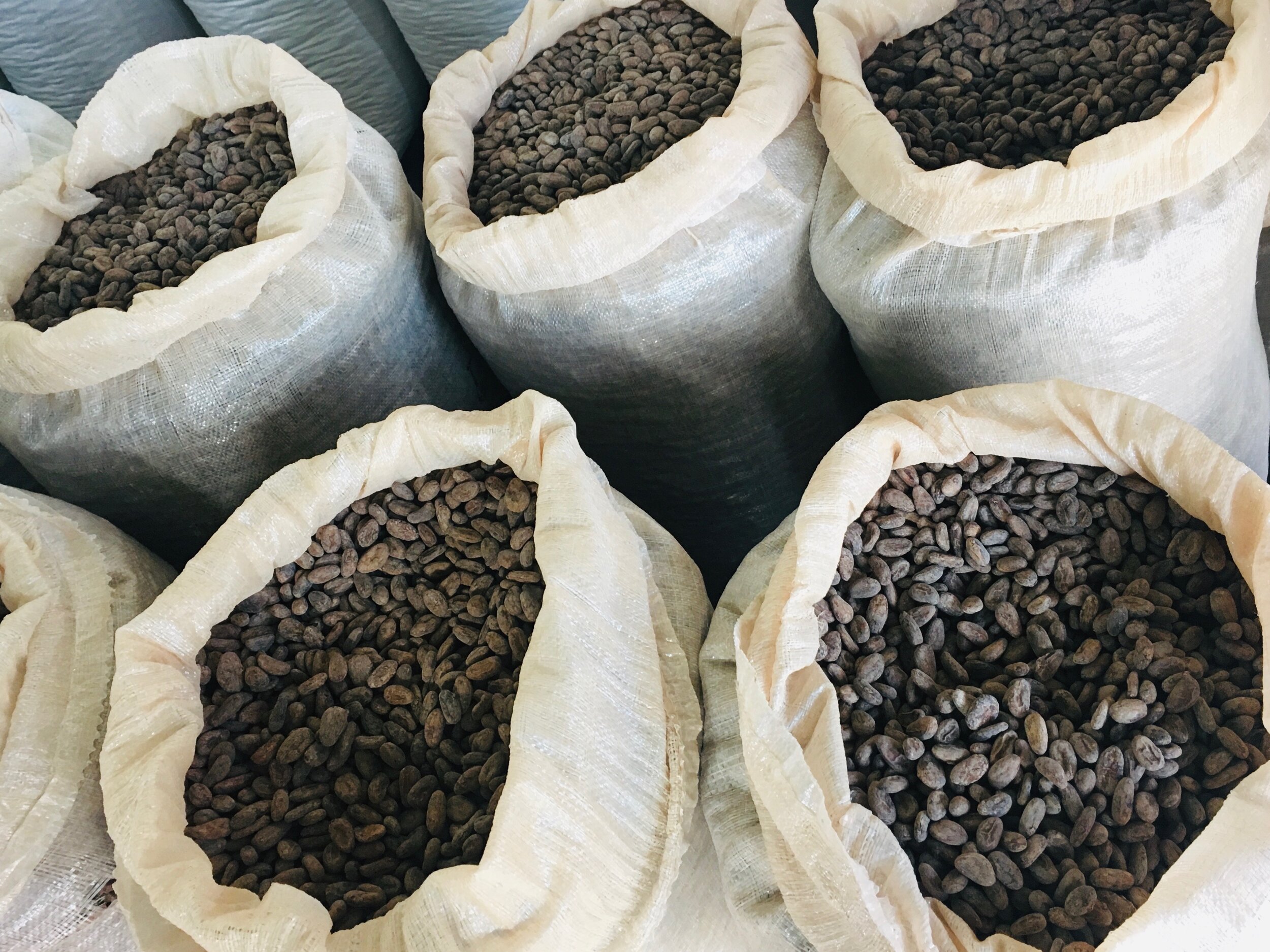Deep Dive: Fair Trade
Welcome to Chocolate Week Grounded Grub Community! We couldn’t help but make this week leading up to Valentine’s Day a bit chocolate themed. While there are so many amazing recipes to make with chocolate, there’s also a lot of considerations to make when perusing the candy isle to get something for your sweetheart (or for yourself. Really just buy chocolate for yourself people). One of the important considerations is looking for a Fair Trade label. We’ve gotten a lot of questions about what those mean so we decided to do a short deep dive into Fair Trade and what it means.
Bags of cocoa bound for a Ritter Sport processing facility on Hannah’s latest trip to Nicaragua.
It is impossible to talk about chocolate without addressing the complicated certifications around Fair Trade. As a consumer it can be hard to understand what Fair Trade really means, and why paying a price premium on certain goods might be worth it. Fair Trade is especially relevant for crops that are grown in countries far from where they are consumed. These are often crops like coffee, chocolate, spices and bananas, that have high demand in high-income, highly “developed” countries, but are primarily grown in low-income, “underdeveloped” countries. These products pass through many hands before reaching your countertop, with each person taking a chunk of the profits. So even if you are paying $10 for a pound of coffee, most of that money is going to the roaster and middle men, leaving farmers with somewhere around $1 for their green beans, and barely enough to break even. The same happens with cocoa, because it is another crop that has a lot of “value-added” processing, and the price is set in Europe and other Western countries, far away from where it is grown. If you’re looking to support more farmers abroad with your purchases this Valentines Day, we recommend you look for Fair Trade labels on goods.
Fair Trade guarantees sustainable land cultivation, restricted use of pesticides and fertilizers, and no use of GMO. What is especially unique about Fair Trade is that there is also a Fair Trade premium that helps farmers set a minimum cost for their goods, helps them invest in improving their practices, and invest in improving their communities. This can be new schools, new infrastructure, and most importantly, a living wage for farmers around the world. Seeing this label means that more of the money spent by a consumer is going back to the original producer and their community, rather than just to the corporation that is processing your chocolate bar.
We love this video, from Fair Trade UK. We think it does a wonderful job showing how Fair Trade certification helps cocoa farmers get the true value of their crops, and improve their communities.
While this all sounds amazing, there are some critiques of Fair Trade. Critics believe that Fair Trade does not do “enough” with their money, or that it goes to projects that are not as impactful as advertised. Others complain that the certification is just another extra cost put on consumers, rather than taken from middle men or companies that steal reap the majority of the profits from processed goods. While these are valid critiques, we believe that Fair Trade brings more economic development to agricultural communities around the world, in a global food system where farmers and their community consistently are left to barely scrape-by while others profit.
There are multiple similar but different Fair Trade labels that you may find in a store. This is because there were factions of Fair Trade here in the US that split into Fair Trade America and Fair Trade USA. There are also many other country-specific Fair Trade organizations, like Fair Trade UK, that have the same logo as Fair Trade America. These country-specific organizations are under the broad umbrella of Fair Trade International, but are in charge of working with farmers and imports to specific countries. Confused yet? So are we. Does it matter? Well, we haven’t found any significant difference between the certification processes. Fundamentally, all Fair Trade organizations have deeply similar value systems that prioritize farmer community livelihood, and we believe that both provide consumers with the same piece-of-mind about where and how their food is produced.
Interested in more label lingo? Check out our article about all the different types of labels you may find on foods in the grocery store and what they mean.
